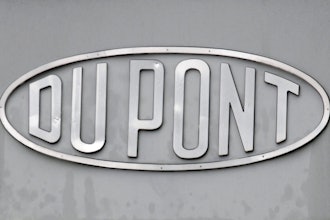
At a time when deregulation of OSHA standards is the trend, businesses should not only follow safety regulations, but bypass them.
You read correctly: create more stringent safety rules for your company; set your own excellent and all-encompassing standards. Why? Because it saves lives and reduces suffering, and it makes great business sense.
This is Part II of a three-part series focused on why and how to create a safe workplace. Part I discussed the true and total costs of noncompliance. It set the stage for establishing why creating a no-injury environment is key to maximum profitability. Safety is the foundation of good business.
Here we’ll dive into everything your safety program should encompass and why going beyond regulations is necessary. Part III will cover how to implement your new, excellent safety plan.
Why Go Beyond Regulations?
Regulations aren’t enough for one simple reason: they are general, and your workplace is specific. Even within the same industry, or the same company, from plant to plant, safety needs differ.
Also, the goal here isn’t base-level compliance; it’s no injuries, no fatalities. Your job is to find the particular hazards your employees face and mitigate or eliminate them. Remember that most (all?) injuries are preventable.
Consider common causes of workplace accidents. According to Christina Hamlett writing in the Houston Chronicle, among the top ten are stress, fatigue, falling objects, lifting, and collisions.
That last cause isn’t referring to vehicle accidents. Many injuries are caused by people literally running into each other or objects. These are issues that can be remedied with some attention put on them. But this attention needs to focus on the circumstances that are unique to the environment and the people of your organization.
Safety And Health: They Work In Tandem
Safe employees are healthy employees. Rested, well nourished, fit employees will have more of the energy needed to be mindful and attend to details than those who are exhausted and living off soda and chips. That list of common causes of injuries at work makes this clear: a fatigued employee is not a safe employee.
A complete safety plan, then, takes into account encouraging a healthy diet, exercise, and rest. You can’t control all aspects of an employee’s life, but incentives and rewards for making healthy choices, in addition to providing health education, can influence better behaviors.
You can stock cafeterias and vending machines with healthy options. Similarly, encouraging employees to move and stretch, even just a small amount — but regularly — also combats fatigue, as well as reduces the chances of another common workplace injury: repetitive strain.
Safety Accounts For The Whole Person
Safety isn’t only about physical well-being. A comprehensive health and safety plan covers emotional and mental health. Workers plagued by emotional distress are less productive and more prone to distraction, fatigue, and stress, and it’s clear where that leads.
Addressing emotional and mental well-being includes a focus on peer-to-peer and boss-to-employee relationships. Training about being culturally sensitive, appropriate male-female interactions, and working with others in a diverse workplace falls under this area of safety.
The aim here isn’t that all employees become best friends, but that there is respect among all co-workers. From respect comes trust, which, as it turns out, is an important component of safety.
The Shell Oil company learned this after doing a highly unconventional experiment with their rig workers. NPR’s Hanna Rosin reported in an Invisibilia episode called “The New Norm” about Shell’s experience. The fossil fuel giant found that getting workers to open up to each other, to be vulnerable and trust each other, led to an 84 percent drop in accidents companywide, as well as increased productivity.
Having an open dialog with employees about emotional and mental well-being opens the door for them to share. Facebook COO Sheryl Sandberg recently led by example, sharing with her workforce her feelings about the tragic loss of her husband, even breaking down in tears during meetings.
Sandberg’s book Option B: Facing Adversity, Building Resilience and Finding Joy shares her story. She readily encourages her employees to do the same, and they do. It’s led to a greater sense of community and well-being among her workforce.
It’s worth repeating: a stressed, anxious, unfocused employee is one who is more prone to the most common causes of accidents. This endangers the person who is distressed as well as his or her co-workers. Safety is a team effort.
Put in economic terms, people perform most efficiently when they are healthy, clear thinking, and respected.
Get Creative And Unconventional To Achieve Safety For Your Whole Workforce
When planning or revamping your safety program, OSHA recommends starting with the basics and adding on from there: “If you focus on achieving goals, monitoring performance, and evaluating outcomes, your workplace can progress along the path to higher levels of safety and health achievement,” states the organization on its website.
There is no set template for what safety program will work best in your workplace. It’s time to get creative and include out some unconventional ideas in your safety plan. Discover tips on how to implement your program in Part III next week.
TJ Scimone founded Slice, Inc. in 2008, and has made safety his top priority since. Interested in raising the bar on reducing injuries, he collaborates with world-renowned engineers to rethink every aspect of safety design.























